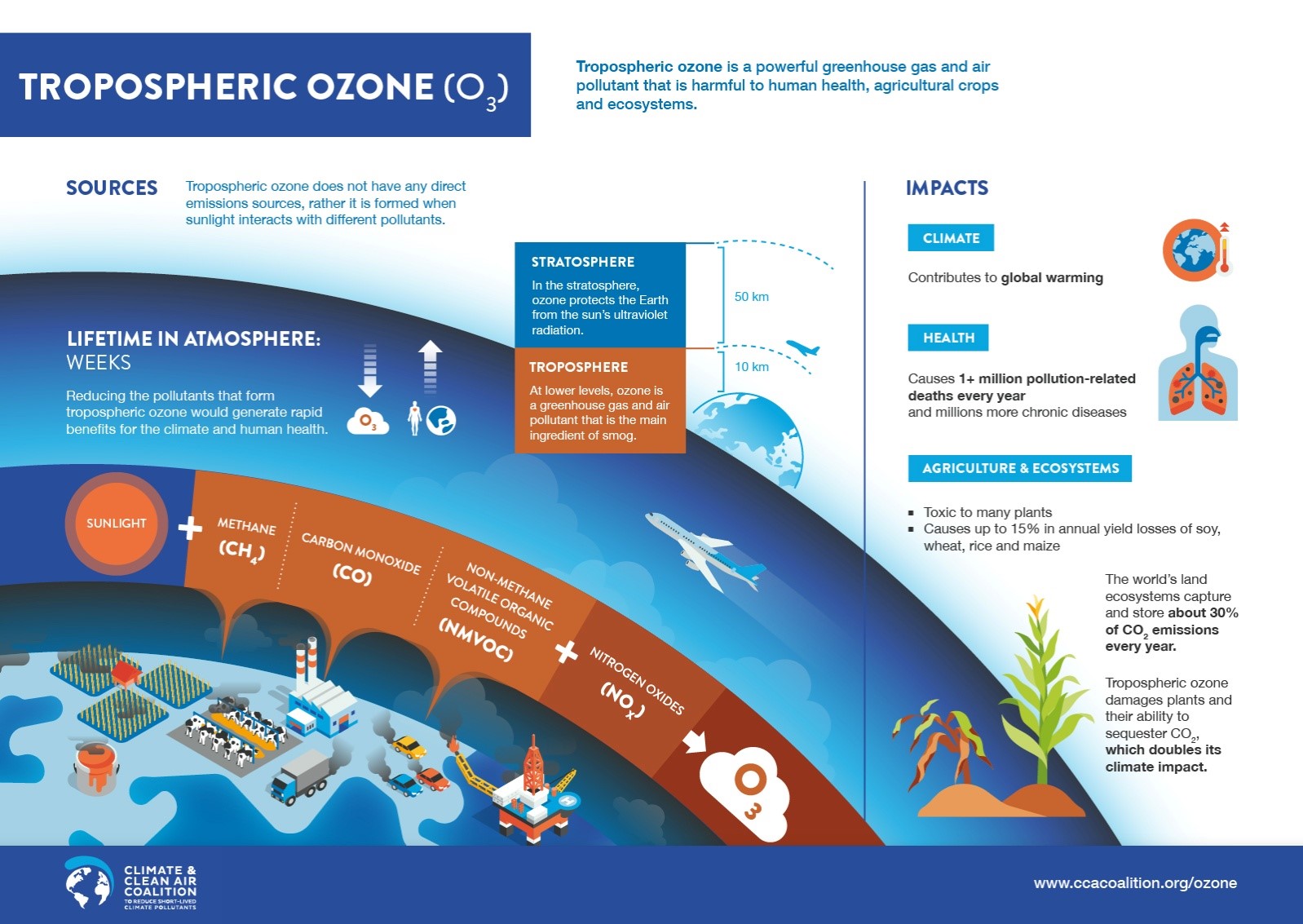Ground level Ozone
Context:
- A Centre for Science and Environment study has found that ozone levels are exceeding the permitted levels even during winter in Delhi-NCR, making the smog more “toxic”.
- Despite lockdown, more days witnessed higher and longer duration of ozone spells.
Year-round menace
- Ozone, a highly reactive gas and dangerous for those suffering from respiratory conditions and asthma, is becoming more widespread in Delhi and NCR across all seasons.
- Contrary to the notion that ozone, produced photochemically from interaction between gases in the presence of sunlight, is predominantly a summer phenomenon, the analysis finds the gas has emerged as an equally strong concern during winter as well.
Ground-level ozone
- Tropospheric, or ground level ozone, is created by chemical reactions between oxides of nitrogen (NOx) and volatile organic compounds (VOC).
- It usually increases when pollutants emitted by cars, power plants, industrial boilers, refineries, chemical plants, and other sources chemically react in the presence of sunlight, impacting human health.
- Its precursors are methane (CH4) and Nonmethane hydrocarbons (NMHCs).
- It is a colourless and highly irritating gas.
- It has significant effects on human health. Exposure to ozone can cause premature mortality and a range of morbidity and asthma symptom.
- It can significantly impact vegetation and decrease the productivity of some crops.
- It can injure flowers and shrubs and may contribute to forest decline.
- Ozone can also damage synthetic materials, cause cracks in rubber, accelerate fading of dyes, and speed deterioration of some paints and coatings.
It damages cotton, acetate, nylon, polyester and other textiles




1.png)
